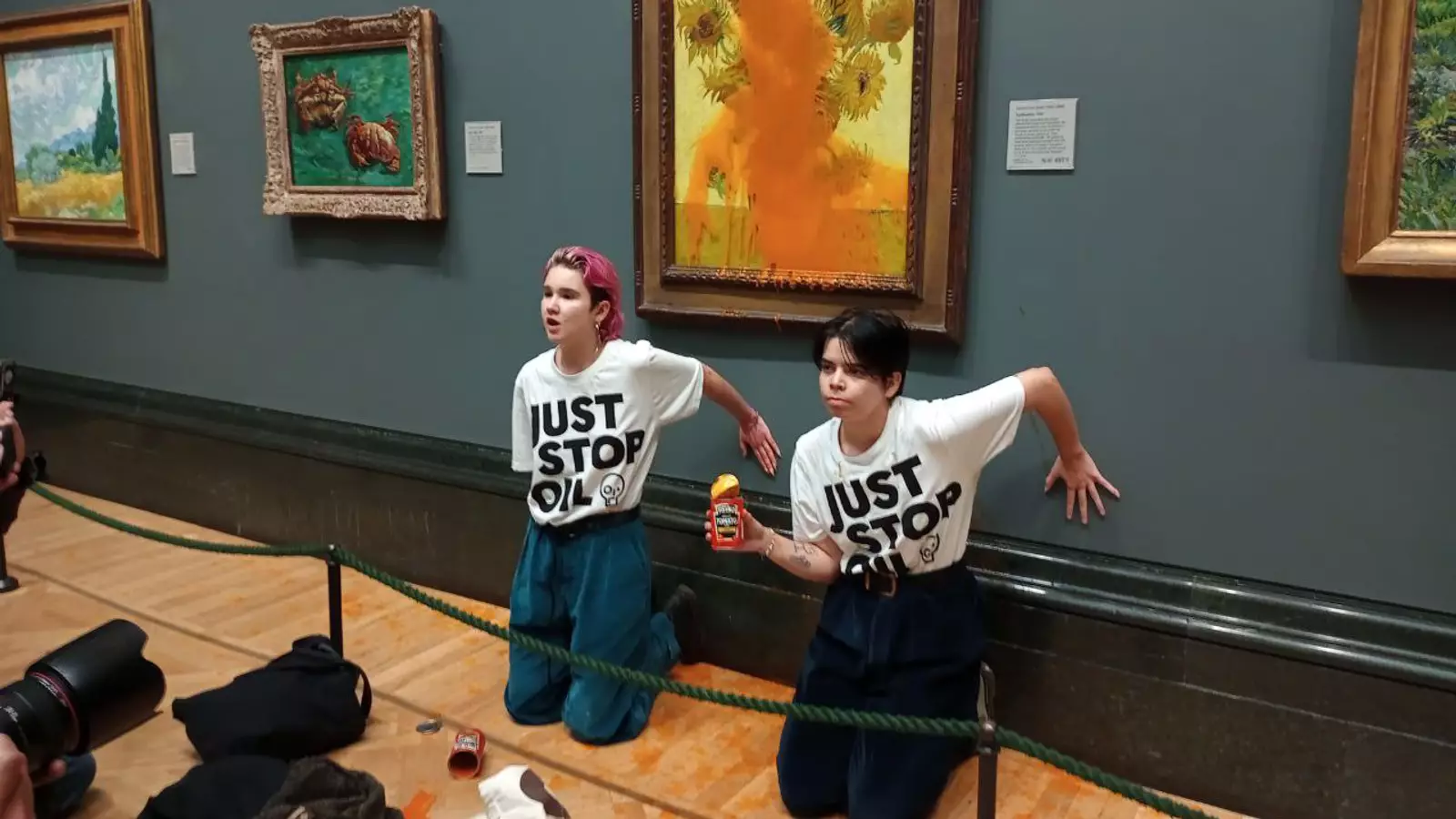In an unprecedented move to protect its cherished artworks, the National Gallery in London has enacted a ban on almost all liquids, allowing only baby formula, expressed milk, and prescription medications. Effective immediately, this policy shift reflects rising tensions within the cultural sector, where various activist groups have increasingly targeted famous artworks to draw attention to their causes. Recent incidents, including attacks on Vincent van Gogh’s iconic painting *Sunflowers*, have forced the gallery to reconsider its visitor policies to ensure the safety of both its collection and its patrons.
Since July 2022, numerous artworks have faced vandalism at the hands of activists advocating for causes such as climate change. Prominent pieces attacked include John Constable’s *The Hay Wain* and Velázquez’s *Rokeby Venus*, as well as van Gogh’s *Sunflowers*. Though the intentions behind these actions often center around raising awareness, the physical damage inflicted on these pieces of art, which are not only significant culturally but also financially valuable, has become a pressing concern for institutional curators. The National Gallery has noted these acts have caused not only physical damage but also emotional distress among visitors and staff, creating a challenging environment for the institution.
According to the gallery’s recent statement, security measures will now include mandatory walk-through metal detectors at every entrance, which will inevitably prolong the entry process due to the inspections of bags and rucksacks. The museum has advised visitors to limit their baggage, an indication of the heightened scrutiny aimed at maintaining the integrity of the exhibited collections. This new protocol comes after two incidents within a span of two weeks, highlighting the urgency behind these measures to safeguard their collection.
The financial implications of these attacks are significant; recent valuations estimate that damages associated with vandalized artworks range from £10,000 to £20,000. Activists from groups such as Just Stop Oil face legal repercussions for their actions, as evidenced by their not guilty pleas following a damaging protest at the National Gallery. The ramifications of these protests extend beyond the courtroom; they adversely affect the public’s ability to enjoy art and challenge museums to consider their position on social issues.
The National Gallery stands at a crossroads, where it must balance its mission to promote art accessibility with the need to protect its invaluable collection. This situation raises broader questions about the methods employed by activist groups and their impacts on the cultural landscape. While drawing attention to critical issues is paramount, the question remains whether targeting cherished artworks serves the greater good or alienates public support for these causes.
In light of these developments, the National Gallery’s new liquid ban signals a defensive posture as the institution navigates these challenging waters. As a cultural cornerstone, it plays a vital role in preserving not only the artwork but also the very essence of cultural exchange and public engagement. How this dialogue evolves moving forward remains to be seen, but it is evident that both art and activism face an uncertain future in the rapidly changing social climate.

Leave a Reply